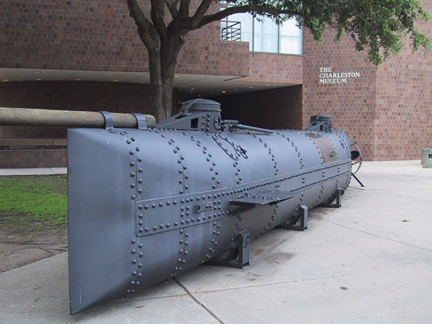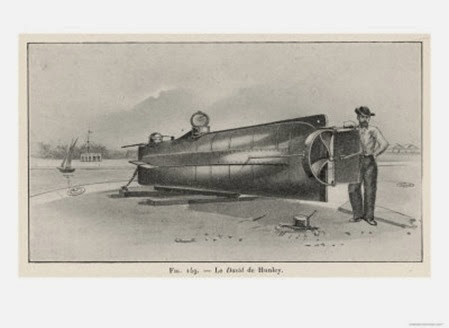
The archeologists stated that the wallet was in remarkably good condition. 21, 2003) - This Civil War-era wallet was discovered by Naval Historical Center archeologists during their excavation of the Confederate submarine H.L.

The historians and academics deny the signal was given, and claim the blue light seen was a lie because the Hunley sank with the Housatonic and never had a chance to send the signal.Įnglish: Naval Historical Center, Navy Yard, Washington D.C. The signal was a blue light shown by the Hunley. Shortly after the torpedo exploded and the USS Housatonic sank, with only its masts remaining above water, a Confederate sentry saw the signal from the Hunley for the lamp on shore to be lit to aid the submarine back to its dock. This was the night that the Hunley successfully attacked and sank the USS Housatonic. On the night of 14 February 1864 the Hunley ventured forth on what would be its last patrol. It was during this time the Hunley was fitted with a spar type torpedo and would use this on future attacks instead of the towed powder keg. The watch was retrieved from the Hunley and archeologists hope to use it to determine the time the sub sank on February 17, 1864. Hunley, Paul Mardikian, uses a microscope to examine a pocket watch that belonged to the sub’s commanding officer, Lt. 7, 2003) - Senior Conservator of the Civil War-era Confederate submarine the H.L. The most surprising feature discovered after the submarine was raised in 2000 is internal frames spaced every three feet to strengthen the hull, just as the modern United States Navy’s nuclear powered submarines have.Įnglish: Charleston Navy Yard, S.C. Modern historians and academics greatly underestimated how advanced this submarine was, until it was raised in 2000. The Hunley incorporated knowledge learned from Pioneer and Pioneer II, and benefitted from the additional designers and engineers who had joined the project since 1861. Hunley (named after the largest investor in the submarine) slid into the harbor for the first time. Photo courtesy of Naval Historical Center (RELEASED) (Photo credit: Wikipedia) Archaeologists and conservators are hopeful that once the bench is removed, they will discover new Hunley artifacts. 28, 2005) – Civil War Confederate submarine Hunley conservators Philippe de Vivies, left, and Paul Mardikian remove the first section of the crew’s bench at the Warren Lash Conservation Lab in the former Charleston Navy Shipyard, S.C. Privateers are not as efficient as navy ships, but it is an effective way to put a large fleet of ships at sea to oppose an enemy.)Ĭharleston, S.C. The privateer must follow all rules of war and comes under the control of the government that issued the Letter of Marque. The privateer receives half of the value and the government half. When a privateer sinks or captures an enemy ship they report to a maritime court (in the United States this is any federal court) where a value is affixed to the captured or sunk ship and its cargo. The ship owner must prove he has a seaworthy ship and trained crew. Often governments will authorize, with a Letter of Marque, private ship owners to attack enemy shipping. On 31 March 1862, the men received a Letter of Marque from the Confederates States. It was while building this first submarine, Pioneer, that Horace Hunley joined McClintock and Watson. McClintock and Watson intended to build a submarine, apply for a Letter of Marque from the Confederacy, and attack United States shipping for profit. The Confederacy decided to use privateers as a way to put ships at sea to oppose the United States Navy.


At the beginning of the war, the Confederacy had no navy and little money to build one. The story of the Hunley begins in the winter of 1861/62 in New Orleans with two steam gauge manufacturers, James McClintock and Baxter Watson. Skerrett, 1902, after a painting then held by the Confederate Memorial Literary Society Museum, Richmond, Virginia Deutsch: Illustration des U-Boots „Hunley“ von R.


 0 kommentar(er)
0 kommentar(er)
